#MongoDB Development Company
Explore tagged Tumblr posts
Text
Looking to Hire a MongoDB Developers Our MongoDB Development Services Company builds high performance, scalable, and flexible applications using the power of this robust NoSQL database
#MongoDB Development Services in India#MongoDB Development Services#Hire MongoDB Developers in India#MongoDB Development Company#MongoDB Development Services Company
0 notes
Text
0 notes
Text
Ruby on Rails with MongoDB: Power of Non-Relational Databases
Using Ruby on Rails with MongoDB offers significant benefits for scalable web development. This powerful combination enhances both flexibility and performance, making it an ideal choice for developers. Ruby on Rails, known for its simplicity and convention-over-configuration approach, streamlines the development process, while MongoDB, a NoSQL database, provides the flexibility to handle unstructured data and scale effortlessly. Together, they create a robust environment where web applications can grow and adapt to changing demands with ease, delivering a seamless and efficient user experience.

#Ruby on Rails with MongoDB#ruby on rails development#ruby on rails development company#ruby on rails company#ruby on rails development services#offshore ruby on rails development#ruby on rails development agency#ruby on rails development india#ruby on rails development firm#custom ruby on rails development services#ruby on rails development company usa#ruby on rails development company in india#ruby on rails development company india#hire ruby on rails development company#offshore ruby on rails development company#ruby on rails development new york#hire ruby on rails development companies#top ruby on rails development company#ruby on rails development companies in india#rails development companies#rails development company#ruby development company#rails company#rails development#ruby development#ruby on rails development companies#ruby on rails companies#ruby on rails web development#best ruby on rails companies#ruby on rails agency
1 note
·
View note
Text
In the realm of full-stack web development, the MEAN stack development stands as a powerful and versatile framework. Comprised of MongoDB, Express.js, Angular, and Node.js, this stack empowers mean stack developers to create dynamic, scalable, and efficient web applications. In this article, we'll take a deep dive into each component of the MEAN stack development services, from the flexible NoSQL database MongoDB to the dynamic frontend framework Angular.
#ahextechnologies#mean stack solution#mongodb development services#angular#mean#mean stack framework#nodejs#expressjs#mean stack development company#mean stack
0 notes
Text
In the dynamic landscape of database management, MongoDB emerges as a strong choice, especially in 2024. As an open, document-oriented NoSQL database system, MongoDB offers unparalleled flexibility and scalability, and making it desirable for software projects .
Unlike traditional relational databases, MongoDB adopts a schema-less approach, allowing each document in a collection to have a unique field This flexibility proves invaluable in today’s fast-paced digital environment in, where data structures evolve rapidly. MongoDB's ability to easily handle diverse and growing data structures makes it an ideal choice for big data applications, mobile applications and content management systems
A unique feature of MongoDB is its unique document model, which enables internesting of arrays and documents. This capability makes it easier to specify complex hierarchical relationships, making data storage and retrieval more efficient and intuitive for developers. Additionally, MongoDB’s rich query language, indexing support, and integrated caching further improve performance and scalability.
MongoDB offers a compelling proposition for businesses looking for reliable offshore development solutions. Combined with the expertise of a dedicated team from a renowned offshore development company like August Infotech, MongoDB can provide innovation and efficiency in web applications August Infotech specializes in solutions tailored offerings for specific client needs, ensuring optimal results and customer satisfaction.
In conclusion, MongoDB remains the dominant choice for database management in 2024 and beyond. Its flexibility, efficiency, and performance make it a versatile tool for modern software projects.
Read more: https://bit.ly/48UIww6
#offshore development company#offshore developers#mongodb#mongodbin2024#offshore development services#Data science solutions & insights services
0 notes
Text
youtube
#youtube#video#codeonedigest#microservices#docker#microservice#nodejs module#nodejs express#node js#nodejs#nodejs projects#nodejs tutorial#node js development company#node js express#node js training#mongo database#mongo db#mongoose#mongodb#docker image#docker container#docker tutorial#docker course#dockerfile#dockerhub
0 notes
Text
0 notes
Text
Unleashing the Power of MongoDB: Key Things to Know
Introduction:
In the digital age, data is the lifeblood of businesses and applications. To efficiently manage vast amounts of data, developers and organizations turn to powerful database solutions. One such solution that has revolutionized the world of NoSQL databases is MongoDB. In this blog, Indian web design company will explore the key things to know about MongoDB, its features, advantages, and why it has become a favorite among developers worldwide.
What is MongoDB?
MongoDB is a document-oriented, open-source NoSQL database system. It stores data in flexible JSON-like documents, making it ideal for managing semi-structured and unstructured data. Developed by MongoDB Inc., it was first released in 2009 and quickly gained popularity due to its ease of use and scalability.
Schema Flexibility:
Unlike traditional relational databases, MongoDB offers schema flexibility. This means you can store different types of data within the same collection without the need for a predefined schema. The ability to adapt the schema on the fly empowers developers to build applications faster and handle evolving data requirements with ease.
JSON-like Documents:
MongoDB's data model uses BSON (Binary JSON) documents, which closely resemble JSON objects. These documents can contain arrays and nested structures, providing a natural representation of data and simplifying the integration with modern programming languages.
High Performance and Scalability:
MongoDB's architecture is designed for high performance and horizontal scalability. It employs sharding, a technique that distributes data across multiple servers, enabling seamless scaling as data volume and application demands increase. This horizontal scaling ensures smooth performance even under heavy loads.
Rich Query Language:
As per web design company in Bangladesh,MongoDB offers a powerful and expressive query language that supports complex queries, indexing, and geospatial queries. The flexible query language allows developers to retrieve data efficiently, and the built-in indexing improves query performance.
Replication and High Availability:
MongoDB's built-in replication features ensure data redundancy and high availability. By maintaining multiple copies of data across a cluster of servers, MongoDB ensures that the system remains operational even if some nodes fail.
Community and Support:
MongoDB boasts a vibrant and active community of developers and users. This community actively contributes to the improvement of the database, offers support on forums, and shares valuable insights through blogs and tutorials.
Security Features:
Security is paramount in any database system. MongoDB provides various security features, including authentication, authorization, and role-based access control (RBAC). These features help protect sensitive data from unauthorized access and ensure compliance with data privacy regulations.
Cloud-Native and Integration:
MongoDB has embraced the cloud-native approach, offering seamless integration with major cloud platforms like AWS, Azure, and Google Cloud. Additionally, there are numerous tools and libraries that facilitate easy integration with popular programming languages and frameworks.
Use Cases:
MongoDB is widely adopted across various industries and use cases. It excels in applications that require high flexibility, real-time data processing, and scalability. It is commonly used in e-commerce, content management systems, mobile applications, IoT projects, and big data analytics.
Conclusion:
MongoDB has revolutionized the world of database management with its schema flexibility, high performance, and scalability. Its document-oriented approach, robust features, and active community support have made it a top choice for modern applications. As per web design agency in kolkata by understanding the power and capabilities of MongoDB, developers and businesses can unlock new possibilities and elevate their data-driven solutions to new heights. Embrace the future of database management with MongoDB and experience the seamless handling of data in a dynamic and fast-paced digital world.
0 notes
Text
What Is The Difference Between Web Development & Web Design?
In today’s world, we experience the growing popularity of eCommerce businesses. Web designing and web development are two major sectors for making a difference in eCommerce businesses. But they work together for publishing a website successfully. But what’s the difference between a web designers in Dubai and a web developer?
Directly speaking, web designers design and developers code. But this is a simplified answer. Knowing these two things superficially will not clear your doubt but increase them. Let us delve deep into the concepts, roles and differentiation between web development and website design Abu Dhabi.

What Is Meant By Web Design?
A web design encompasses everything within the oeuvre of a website’s visual aesthetics and utility. This might include colour, theme, layout, scheme, the flow of information and anything related to the visual features that can impact the website user experience.
With the word web design, you can expect all the exterior decorations, including images and layout that one can view on their mobile or laptop screen. This doesn’t concern anything with the hidden mechanism beneath the attractive surface of a website. Some web design tools used by web designers in Dubai which differentiate themselves from web development are as follows:
● Graphic design
● UI designs
● Logo design
● Layout
● Topography
● UX design
● Wireframes and storyboards
● Colour palettes
And anything that can potentially escalate the website’s visual aesthetics. Creating an unparalleled yet straightforward website design Abu Dhabi can fetch you more conversion rates. It can also gift you brand loyalty which is the key to a successful eCommerce business.
What Is Meant By Web Development?
While web design concerns itself with all a website’s visual and exterior factors, web development focuses on the interior and the code. Web developers’ task is to govern all the codes that make a website work. The entire web development programme can be divided into two categories: front and back.
The front end deals with the code determining how the website will show the designs mocked by a designer. While the back end deals entirely with managing the data within the database. Along with it forwarding the data to the front end for display. Some web development tools used by a website design company in Dubai are:
● Javascript/HTML/CSS Preprocessors
● Template design for web
● GitHub and Git
● On-site search engine optimisation
● Frameworks as in Ember, ReactJS or Angular JS
● Programming languages on the server side, including PHP, Python, Java, C#
● Web development frameworks on the server side, including Ruby on Rails, Symfony, .NET
● Database management systems including MySQL, MongoDB, PostgreSQL
Web Designers vs. Web Developers- Differences
You must have become acquainted with the idea of how id web design is different from web development. Some significant points will highlight the job differentiation between web developers and designers.
Generally, Coding Is Not A Cup Of Tea For Web Designers:
Don’t ever ask any web designers in Dubai about their coding knowledge. They merely know anything about coding. All they are concerned about is escalating a website’s visual aspects, making them more eyes catchy.
For this, they might use a visual editor like photoshop to develop images or animation tools and an app prototyping tool such as InVision Studio for designing layouts for the website. And all of these don’t require any coding knowledge.
Web Developers Do Not Work On Visual Assets:
Web developers add functionality to a website with their coding skills. This includes the translation of the designer’s mockups and wireframes into code using Javascript, HTML or CSS. While visual assets are entirely created by designers, developer use codes to implement those colour schemes, fonts and layouts into the web page.
Hiring A Web Developer Is Expensive:
Web developers are more expensive to hire simply because of the demand and supply ratio. Web designers are readily available as their job is much simpler. Their job doesn’t require the learning of coding. Coding is undoubtedly a highly sought-after skill that everyone can’t entertain.
Final Thoughts:
So if you look forward to creating a website, you might become confused. This is because you don’t know whether to opt for a web designer or a developer. Well, to create a website, technically, both are required. So you need to search for a website design company that will offer both services and ensure healthy growth for your business.
2 notes
·
View notes
Text
Introduction to SkillonIT Learning Hub- Empowering Rural Talent With World-Class IT Skills
SkillonIT provides IN-Demand IT courses, connecting Rural talent with rewarding IT skills through affordable, accessible and career-focused education. with Guaranteed pathways to internship and high paying jobs, start with us and step into Opportunities at top Tech-leading Companies. Skillonit Learning Hub, located in Buldhana, Maharashtra, is a leading institute dedicated to equipping individuals with cutting-edge technology skills. With a mission to bridge the digital divide, the institute provides high-quality education in various IT and professional development domains. Skillonit focuses on practical, industry-oriented training, ensuring students gain the expertise needed to thrive in today’s competitive job market. The hub is committed to empowering rural talent and shaping the next generation of skilled professionals.

Courses Offered Skillonit Learning Hub offers a diverse range of courses tailored to industry demands, enabling students to master both technical and professional skills.
Blockchain Development — Smart Contracts (Solidity, Rust, Web3.js, Hardhat) — Blockchain Protocols (Ethereum, Solana, Binance Smart Chain, Fantom) — Decentralized Applications (DApps) Development
Front-End Development — HTML, CSS, JavaScript — Frameworks: React.js, Vue.js, Angular — Responsive Web Design & UI Frameworks (Bootstrap, Tailwind CSS)
Back-End Development — Server-side Programming (Node.js, Python, PHP, Java, .NET) — Database Management (MySQL, MongoDB, Firebase, PostgreSQL) — API Development (RESTful APIs, GraphQL, WebSockets)
Full-Stack Development — Front-End + Back-End Integration — MERN Stack Development — Database, Deployment & DevOps Practice
Mobile App Development — Cross-Platform Development (Flutter, React Native)
Unity 3D Game Development — Game Mechanics & Physics — C# Programming for Game Development — Virtual Reality (VR) & Augmented Reality (AR) Integration
Professional UI/UX Design — User Interface Design (Adobe XD, Figma, Sketch) — User Experience Principles — Prototyping, Wireframing & Usability Testing
Professional Graphic Design — Adobe Photoshop, Illustrator, and CorelDraw — Branding & Logo Design — Digital Art & Visual Communication
Digital Marketing — SEO, SEM, and Social Media Marketing — Content Marketing & Copywriting — Google Ads, Facebook Ads & Analytics
Spoken English — Communication Skills & Public Speaking — Accent Training & Fluency Improvement
Personality Development — Business & Corporate Etiquette — Confidence Building & Interview Preparation — Leadership & Teamwork Skills
Location & Contact : Address : Chhatrapati Tower, Above Maratha Mahila Urban, 3rd Floor, Chikhali Road, Buldhana, Maharashtra, 443001.
Contact us
Conclusion : Skillonit Learning Hub is revolutionizing IT and professional education by making technology and essential career skills accessible to aspiring developers, designers, marketers, and professionals. With a strong emphasis on practical learning, industry exposure, and career opportunities, it stands as a beacon of growth for young talent in Buldhana and beyond. Whether you are looking to build a career in tech, marketing, design, or personal development, Skillonit provides the ideal platform to achieve your goals. Join Our Social Community
Skillonit #Education #ITCourses #Buldhana #Maharashtra #IT #Blockchain #Fullstack #Front-end #Back-end #MobileApp #Unity3d #UIUX #Graphicdesign #Digitalmarketing #SpokenEnglish #Personality #development
2 notes
·
View notes
Text
Ruby on Rails with MongoDB: Power of Non-Relational Databases
Using Ruby on Rails with MongoDB offers significant benefits for scalable web development. This powerful duo enhances both flexibility and performance, making it an ideal choice for developers seeking to build robust applications. Ruby on Rails provides a solid framework that simplifies the development process, while MongoDB, as a NoSQL database, offers the flexibility to handle unstructured data and scale effortlessly. Together, they create a development environment that can adapt to the evolving needs of modern web applications, ensuring high performance and scalability.

#Ruby on Rails with MongoDB#ruby on rails development#ruby on rails development company#ruby on rails company#ruby on rails development services#offshore ruby on rails development#ruby on rails development agency#ruby on rails development india#ruby on rails development firm#custom ruby on rails development services#ruby on rails development company usa#ruby on rails development company in india#ruby on rails development company india#hire ruby on rails development company#offshore ruby on rails development company#ruby on rails development new york#hire ruby on rails development companies#top ruby on rails development company#ruby on rails development companies in india#rails development companies#rails development company#ruby development company#rails company#rails development#ruby development#ruby on rails development companies#ruby on rails companies#ruby on rails web development#best ruby on rails companies#ruby on rails agency
0 notes
Text
What is Mern stack And Its importance? Before that I will Tell you the best institute for Mern stack course in Chandigarh.

What is Mern stack?
MERN Stack is a popular JavaScript-based technology stack used for building full-stack web applications. It consists of four key technologies:
MongoDB: A NoSQL database that stores data in a flexible, JSON-like format.
Express.js: A lightweight and fast backend framework for Node.js.
React.js: A front-end JavaScript library for building user interfaces.
Node.js: A runtime environment that allows JavaScript to run on the server side.
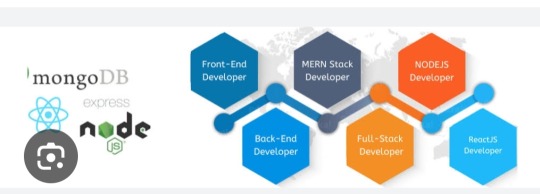
Importance of Mern Stack :
Full-Stack JavaScript – Uses JavaScript for frontend and backend, simplifying development.
High Performance – Node.js ensures fast, scalable applications.
Cost-Effective – Open-source, reducing development costs.
Rapid Development – React’s reusable components speed up UI building.
Flexibility – Suitable for web apps, SPAs, eCommerce, and real-time applications.
Scalability – MongoDB handles large data efficiently.
Strong Community Support – Large developer base ensures continuous updates and support.
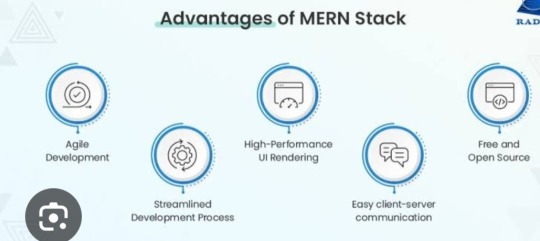
Now i will tell you the best institute for Mern stack course in Chandigarh .
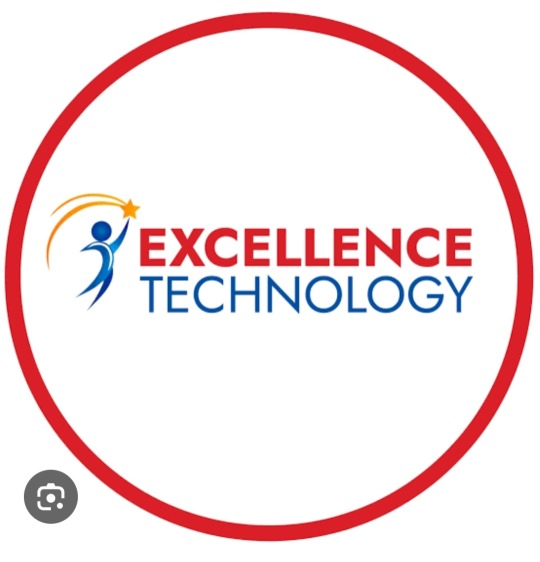
Excellence Technology is a leading EdTech (Educational technology) company dedicated to empowering individuals with cutting -edge IT skills and bridging the gap between education and industry demands. Specializing in IT training ,carrer development, and placement assistance ,the company equipts learners with the technical expertise and practical experience needed to thrive in today's competitive tech landscape. We provide IT courses like python ,Full stack Development, Web Design ,Graphic Design and Digital Marketing.
Contact Us for more details: 93177-88822
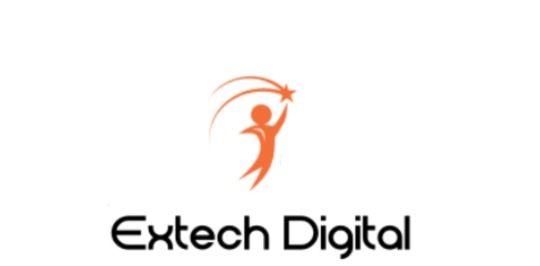
Extech Digital is a leading software development company dedicated to empowering individuals with cutting -edge IT skills and bridging the gap between education and industry demands. Specializing in IT training ,carrer development, and placement assistance ,the company equipt learners with the technical expertise and practical experience needed to thrive in today's competitive tech landscape. e provide IT courses like Python ,Full stack Development, Web Design ,Graphic Design and Digital Marketing.
Contact Us for more details: 93177-88822

Excellence academy is a leading software development company dedicated to empowering individual with cutting edge IT skills and bridging the gap between education and industry demands.specializing in IT training, career development, and placement assistance, the company equits learners with the technical expertise and practical experience needed to thrive in today's landscape. We provide IT courses like python, full stack development,Web design, and Digital marketing.
Contact Us for more details: 93177-88822
About Author
Nikita Thakur
Mern stack AI Developer/ 2+ years of experience
Excellence technology
Professional summary
Nikita thakur is a skilled MERN Stack AI Developer with over 2 years of experience at Excellence Technology. Proficient in MongoDB, Express.js, React.js, and Node.js, she integrates AI solutions to build scalable, high-performance web applications. Nikita excels in developing innovative solutions, enhancing user experiences, and driving business growth through technology.
2 notes
·
View notes
Text
Binance clone script — Overview by BlockchainX
A Binance Clone Script is a pre-built, customizable software solution that replicates Binance's features, connect with BlockchainX
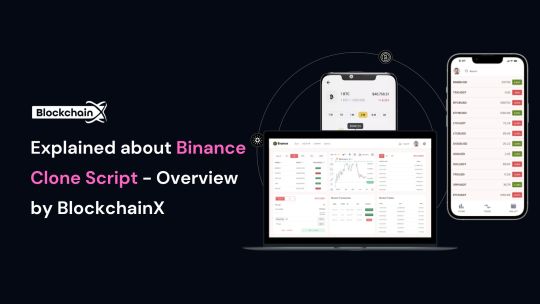
What is Binance Clone Script
A Binance clone script refers to the ready-made solution of the Binance platform that deals with core functions parallel to the widely acclaimed cryptocurrency exchange platform associated with Binance. It enables companies to establish their own platforms like Binance, perfectly parameterized in terms of functionality and user interface of world-famous exchanges. The clone script provides display flexibility with built-in functionality such as spot trading software, futures trading configurations, and wallet systems that are extremely secure.
Basically, it reduces development costs and latency because things like these are already built. And as this is a startup for many young entrepreneurs, they can have saved on their capital to expand or grow their business.
The script is blessed as its feature set caters to future demands in the field. One can enjoy a safe trading experience to customers while ensuring that every peculiarity of Binance’s success opens up to investors of the script.
How does the Binance clone script work?
The Binance clone script works to provide a ready-made platform that replicates Binance’s core features, such as user registration, wallet management, trade and enables users to create accounts, deposit or withdraw cryptocurrency, and trade digital assets through an interface easily and safely. The platform supports various trading methods such as market orders, limit orders and forward trading. It has built-in security features like two-factor authentication (2FA) to save the user money. Admin dashboards allow platform owners to manage users, manage tasks, and set up billing. The script can be tailored to your brand, connecting liquidity sources to make trading more efficient. In short, the Binance clone script provides everything needed to create a fully functional crypto exchange.
key features of a Binance Clone Script
The key features of a Binance Clone Script are designed to make your cryptocurrency exchange platform secure, user-friendly, and fully functional. Here’s a simple overview of these features:
User-Friendly Interface
Multi-Currency Support
Advanced Trading Engine
Secure Wallet System
KYC/AML Integration
Admin Dashboard
Security Features
Trading Options
These features help ensure that your Binance-like exchange is efficient, secure, and ready for the growing crypto market.
Technology Stack Used by BlockchainX
Technology stack used for developing the Binance clone script involves the most advanced technology combination that ensures that the platform must have so much security, scalability, and performance to make it a platform that is secure, scalable, and high-performance as well. Here are a few key technologies and their brief descriptions:
Blockchain Technology:
The underlying part of the cryptocurrency exchange is Blockchain because it ensures the safe and decentralized processing of transactions.
Normally executed on either Ethereum or BSC (Binance Smart Chain) to carry out smart contracts and token transfers.
Programming Languages:
Frontend: For frontend, React or Angular could be engaged in actualization of the user interface leading to a responsive and interactive experience on the various devices.
Backend: In backend, languages like Node.js, Python, or Ruby on Rails can be applied on how internal logic is being run by server and arbitration of user interaction with the module is foremost.
Databases:
These two databases, MySQL or Postgresql, are typically used in user information storage, transaction records, and other exchange information.
NoSQL such as MongoDB or other databases might be used for horizontal scalability and high-volume transaction storage.
Smart Contracts:
It is used to generate and send out smart contracts for auto-trading, token generation, and other decentralized functionalities.
Blockchain Wallets:
Fundamentally, this automatically links famous wallet systems such as MetaMask, Trust Wallet, or Ledger for the secure storage and transactions of cryptocurrency.
Advantages of using a Binance Clone Script
Here are the advantages of using a Binance Clone Script:
Faster Time-to-Market
Cost-Effective
Customizable Features
Liquidity Integration
Multiple Trading Options
So, when entering the marketplace of the cryptocurrencies it would be the most possible work of something to pay off at a rapid pace: the Binance Clone Script proves so.
How to Get Started with BlockchainX’s Binance Clone Script
It is quite a straightforward process to begin working with a BlockchainX Binance Clone Script-this involves the first step of getting in touch with the company for an initial consulting period to understand more about what you require, need, or customize for the site, and what your goals are. When BlockchainX has an understanding of your needs, they offer a detailed list of what a proposal would entail before they can start the work; afterward, they will estimate the costs needed to do the project. Once both sides accept both the presentations and all features and timelines are agreed with, BlockchainX starts working on the development process of building a Binance Clone Script tailored to the brand, user interface, and other features.
After the entire platform is created, it passes through severe testing to ensure that everything functions excellently. Deployment follows the thorough test. BlockchainX customizes your user interface and more extensions, after deployment. BlockchainX also commits to supporting and sustaining your exchange so that it runs successfully and securely.
Conclusion:
At the end, your confusion may as well be cut short. Yes, the Binance Clone Script will be a resilient solution to spark up the exchange platforms synthesizing user-generated cryptocurrency dreams in the blockchain, even without bankroll when it comes to developing the app. Turning with BlockchainX expertise, you can make an adjustment and scale a powerful platform stocked with the likes of Binance that produced Blockchains, while still containing some specific set-ups for your masterpiece. More amazing features are exclusive to the clone script, moreover, such as support for multiple currencies, high-end security, real-time data, and a smooth user interface that completes the trading process for your users without any glitch.
This solution gives easy access to ready-made solutions. It could have quality Depending on the time you conveniently let BlockchainX’s be and use both exchanges or any variation of the two permutations. After all, who decides to couple up with a one-experienced Crypto Exchange developer who is struggling to offer anything new.
#binance clone script#binance clone script development#binance clone script development service#blockchain technology#blockchain#cryptocurrency#cryptocurrencies
2 notes
·
View notes
Text
"Unlock the Power of MERN Stack Development on Cloud ☁️💻".
Up Skill Your Career in MERN-STACK Development on Cloud 👇 And Get 100% Job in Our Own Company
📒Admission open For January 2025 Session.⏱
Only 25 Seats available
Eligibility :- B.Sc IT / BCA/ BCCA / Any BE / MCM / MCA Passout or Final Year candidates can apply
All subjects in one Package 👇 Programming language ✓C language ✓ C++ ✓Node.JS ✓React JS ✓Express JS
Live Projects ✓3 Live Projects ✓3 Live Training projects
DATABASE ✓MongoDB
USER INTERFACE ✓HTML5, ✓CSS,JavaScript , ✓Bootstrap, jQuery, ✓React .
GRAPHICS DESIGNING ✓ Canva ✓ postermywall ✓ Render Forest ✓ photoshop (video)
DIGITAL MARKETING ✓ON Page SEO ✓Off Page SEO ✓ SMM , SEM,
CLOUD PLATFORM ✓AWS Solutions Architect ✓ Linux ✓Comp hardware ✓ Comp Networking
CAREER ASSISTANCE ✓ Preparation For Job interview ✓Communication Skills ✓English Speaking ✓ Softskills Development
Free PHP FullStack Live Videos
Free JAVA Fullstack video
Session Mode Offline , ✓Time Duration 180 Day's (6 month Months )
✓ Full-day Session (8 to 9 hr.)
Last Date Of Registration 📝*13 January 2025
To Know More Call
PSK Technologies Pvt. Ltd. IT Company Nagpur
📞09975288300 📞09422123343 Add:- Lower Ground Floor Fortune Mall Sitabuldi Nagpur 12 New Maharashtra Bank
Find us on Google
📲 Kindly Do Share
#pskitservices#psktechnologies#psknagpur#websitedesign#pskteam#aws#linux#bestitcompany#mernstack#webhosting
3 notes
·
View notes
Video
youtube
Nodejs Microservice with MongoDB in Docker Container | Learn Express Mon... Full Video Link https://youtu.be/_3u7H6Hu7n0 Hello friends, new #video on #nodejs #microservices with #mongodb in #docker #container #tutorial for #api #developer #programmers with #examples is published on #codeonedigest #youtube channel. @java #java #aws #awscloud @awscloud @AWSCloudIndia #salesforce #Cloud #CloudComputing @YouTube #youtube #azure #msazure #docker #nodejs #dockertutorial #learndocker #dockercontainer #nodejsmicroservice #nodejsmicroservicestutorial #nodejsmicroservicearchitecture #nodejsmicroserviceproject #nodejsmicroservicearchitectureexample #nodejsmicroservicearchitecturegithub #mongodbdocker #mongodbtutorial #mongodbinstall #mongodbfullcourse #dockertutorialforbeginners #dockercontainertutorialforbeginners #mongoimagedockercompose #mongoimage #mongodbimage #mongodbatlas #nodejsmicroservice #nodejsmicroservicestutorial #nodejsmicroservicearchitecture #nodejsmicroserviceproject #nodejsmicroserviceexample #nodejsmicroservicesinterviewquestions #nodejsmicroserviceframework #mongodb #nodejsmongodbtutorial #nodejsmongoose #nodejsmongooseconnection #nodejsmongooseexpress #nodejsmongooseschema #nodejsmongodb #nodejsmongodb #nodejsexpress #nodejsexpressapitutorial #nodejsexpressproject #nodejsexpressapi #nodejsexpressapiproject #nodejsexpresstutorial #nodejsexpresscourse #nodejsexpressrestapi #nodejsexpresscrashcourse #nodejsexpressapplication
#youtube#node js microservices#nodejs#node js development services#node js training#node js application#node js development company#node js#mongodb#docker#docker container#docker image#dockerfile#dockerimage
1 note
·
View note
Text
Which is better full stack development or testing?

Full Stack Development vs Software Testing: Which Career Path is Right for You?
In today’s rapidly evolving IT industry, choosing the right career path can be challenging. Two popular options are Full Stack Development and Software Testing. Both of these fields offer unique opportunities and cater to different skill sets, making it essential to assess which one aligns better with your interests, goals, and long-term career aspirations.
At FirstBit Solutions, we take pride in offering a premium quality of teaching, with expert-led courses designed to provide real-world skills. Our goal is to help you know, no matter which path you choose. Whether you’re interested in development or testing, our 100% unlimited placement call guarantee ensures ample job opportunities. In this answer, we’ll explore both career paths to help you make an informed decision.
Understanding Full Stack Development
What is Full Stack Development?
Full Stack Development involves working on both the front-end (client-side) and back-end (server-side) of web applications. Full stack developers handle everything from designing the user interface (UI) to managing databases and server logic. They are versatile professionals who can oversee a project from start to finish.
Key Skills Required for Full Stack Development
To become a full stack developer, you need a diverse set of skills, including:
Front-End Technologies: HTML, CSS, and JavaScript are the fundamental building blocks of web development. Additionally, proficiency in front-end frameworks like React, Angular, or Vue.js is crucial for creating dynamic and responsive web interfaces.
Back-End Technologies: Understanding back-end programming languages like Node.js, Python, Ruby, Java, or PHP is essential for server-side development. Additionally, knowledge of frameworks like Express.js, Django, or Spring can help streamline development processes.
Databases: Full stack developers must know how to work with both SQL (e.g., MySQL, PostgreSQL) and NoSQL (e.g., MongoDB) databases.
Version Control and Collaboration: Proficiency in tools like Git, GitHub, and agile methodologies is important for working in a collaborative environment.
Job Opportunities in Full Stack Development
Full stack developers are in high demand due to their versatility. Companies often prefer professionals who can handle both front-end and back-end tasks, making them valuable assets in any development team. Full stack developers can work in:
Web Development
Mobile App Development
Enterprise Solutions
Startup Ecosystems
The flexibility to work on multiple layers of development opens doors to various career opportunities. Moreover, the continuous rise of startups and digital transformation initiatives has further fueled the demand for full stack developers.
Benefits of Choosing Full Stack Development
High Demand: The need for full stack developers is constantly increasing across industries, making it a lucrative career choice.
Versatility: You can switch between front-end and back-end tasks, giving you a holistic understanding of how applications work.
Creativity: If you enjoy creating visually appealing interfaces while also solving complex back-end problems, full stack development allows you to engage both creative and logical thinking.
Salary: Full stack developers typically enjoy competitive salaries due to their wide skill set and ability to handle various tasks.
Understanding Software Testing
What is Software Testing?
Software Testing is the process of evaluating and verifying that a software product or application is free of defects, meets specified requirements, and functions as expected. Testers ensure the quality and reliability of software by conducting both manual and automated tests.
Key Skills Required for Software Testing
To succeed in software testing, you need to develop the following skills:
Manual Testing: Knowledge of testing techniques, understanding different testing types (unit, integration, system, UAT, etc.), and the ability to write test cases are fundamental for manual testing.
Automated Testing: Proficiency in tools like Selenium, JUnit, TestNG, or Cucumber is essential for automating repetitive test scenarios and improving efficiency.
Attention to Detail: Testers must have a keen eye for identifying potential issues, bugs, and vulnerabilities in software systems.
Scripting Knowledge: Basic programming skills in languages like Java, Python, or JavaScript are necessary to write and maintain test scripts for automated testing.
Job Opportunities in Software Testing
As the demand for high-quality software increases, so does the need for skilled software testers. Companies are investing heavily in testing to ensure that their products perform optimally in the competitive market. Software testers can work in:
Manual Testing
Automated Testing
Quality Assurance (QA) Engineering
Test Automation Development
With the rise of Agile and DevOps methodologies, the role of testers has become even more critical. Continuous integration and continuous delivery (CI/CD) pipelines rely on automated testing to deliver reliable software faster.
Benefits of Choosing Software Testing
Job Security: With software quality being paramount, skilled testers are in high demand, and the need for testing professionals will only continue to grow.
Quality Assurance: If you have a knack for perfection and enjoy ensuring that software works flawlessly, testing could be a satisfying career.
Automated Testing Growth: The shift toward automation opens up new opportunities for testers to specialize in test automation tools and frameworks, which are essential for faster releases.
Flexibility: Testing provides opportunities to work across different domains and industries, as almost every software product requires thorough testing.
Full Stack Development vs Software Testing: A Comparative Analysis
Let’s break down the major factors that could influence your decision:
Factors
Full Stack Development
Software Testing
Skills
Proficiency in front-end and back-end technologies, databases
Manual and automated testing, attention to detail, scripting
Creativity
High – involves creating and designing both UI and logic
Moderate – focuses on improving software through testing and validation
Job Roles
Web Developer, Full Stack Engineer, Mobile App Developer
QA Engineer, Test Automation Engineer, Software Tester
Career Growth
Opportunities to transition into senior roles like CTO or Solution Architect
Growth towards roles in automation and quality management
Salary
Competitive with wide-ranging opportunities
Competitive, with automation testers in higher demand
Demand
High demand due to increasing digitalization and web-based applications
Consistently high, especially in Agile/DevOps environments
Learning Curve
Steep – requires mastering multiple languages and technologies
Moderate – requires a focus on testing tools, techniques, and automation
Why Choose FirstBit Solutions for Full Stack Development or Software Testing?
At FirstBit Solutions, we provide comprehensive training in both full stack development and software testing. Our experienced faculty ensures that you gain hands-on experience and practical knowledge in the field of your choice. Our 100% unlimited placement call guarantee ensures that you have ample opportunities to land your dream job, no matter which course you pursue. Here’s why FirstBit is your ideal training partner:
Expert Trainers: Learn from industry veterans with years of experience in development and testing.
Real-World Projects: Work on real-world projects that simulate industry scenarios, providing you with the practical experience needed to excel.
Job Assistance: Our robust placement support ensures you have access to job openings with top companies.
Flexible Learning: Choose from online and offline batch options to fit your schedule.
Conclusion: Which Career Path is Right for You?
Ultimately, the choice between full stack development and software testing comes down to your personal interests, skills, and career aspirations. If you’re someone who enjoys building applications from the ground up, full stack development might be the perfect fit for you. On the other hand, if you take satisfaction in ensuring that software is of the highest quality, software testing could be your calling.
At FirstBit Solutions, we provide top-notch training in both fields, allowing you to pursue your passion and build a successful career in the IT industry. With our industry-aligned curriculum, expert guidance, and 100% placement call guarantee, your future is in good hands.
So, what are you waiting for? Choose the course that excites you and start your journey toward a rewarding career today!
#education#programming#tech#technology#training#python#full stack developer#software testing#itservices#java#.net#.net developers#datascience
2 notes
·
View notes